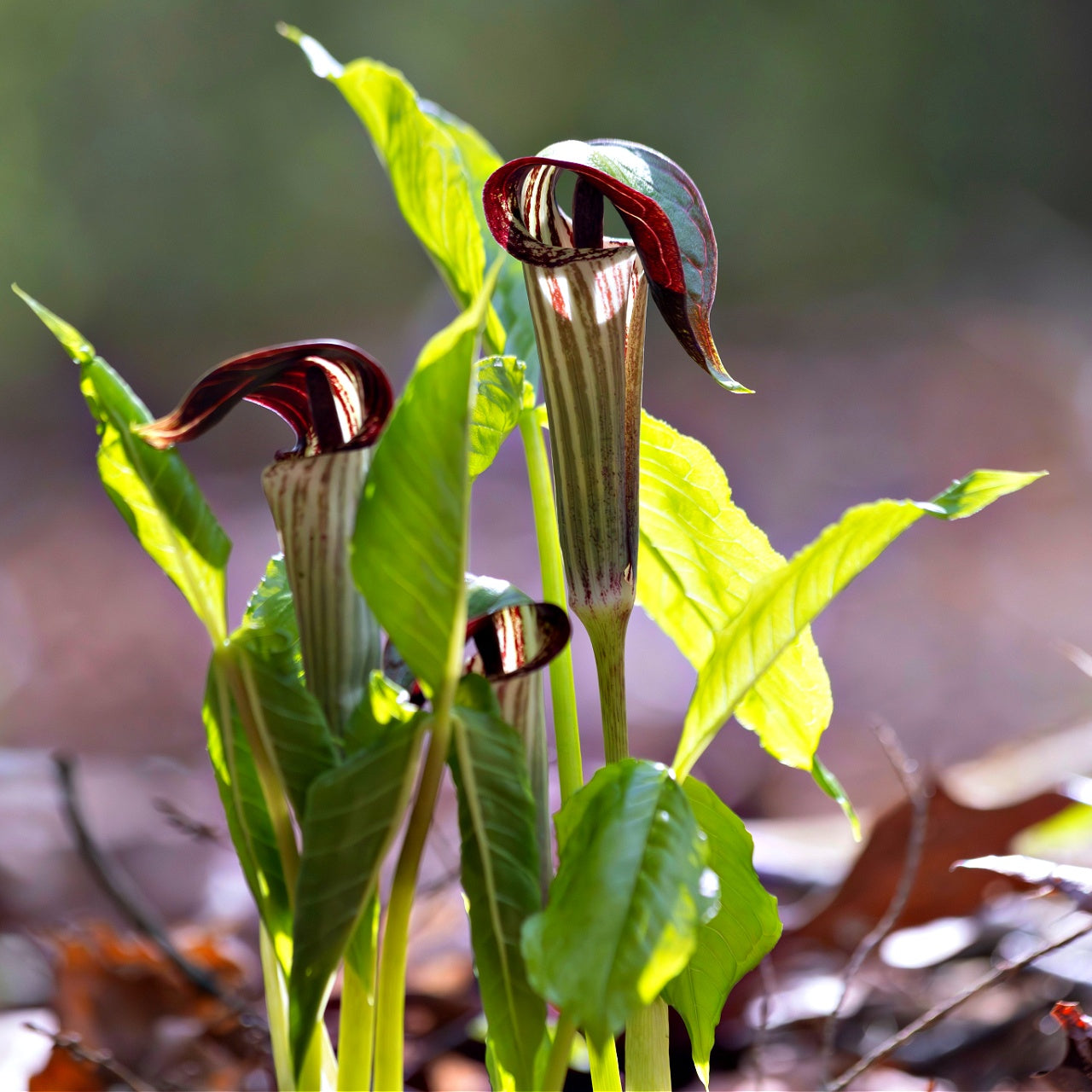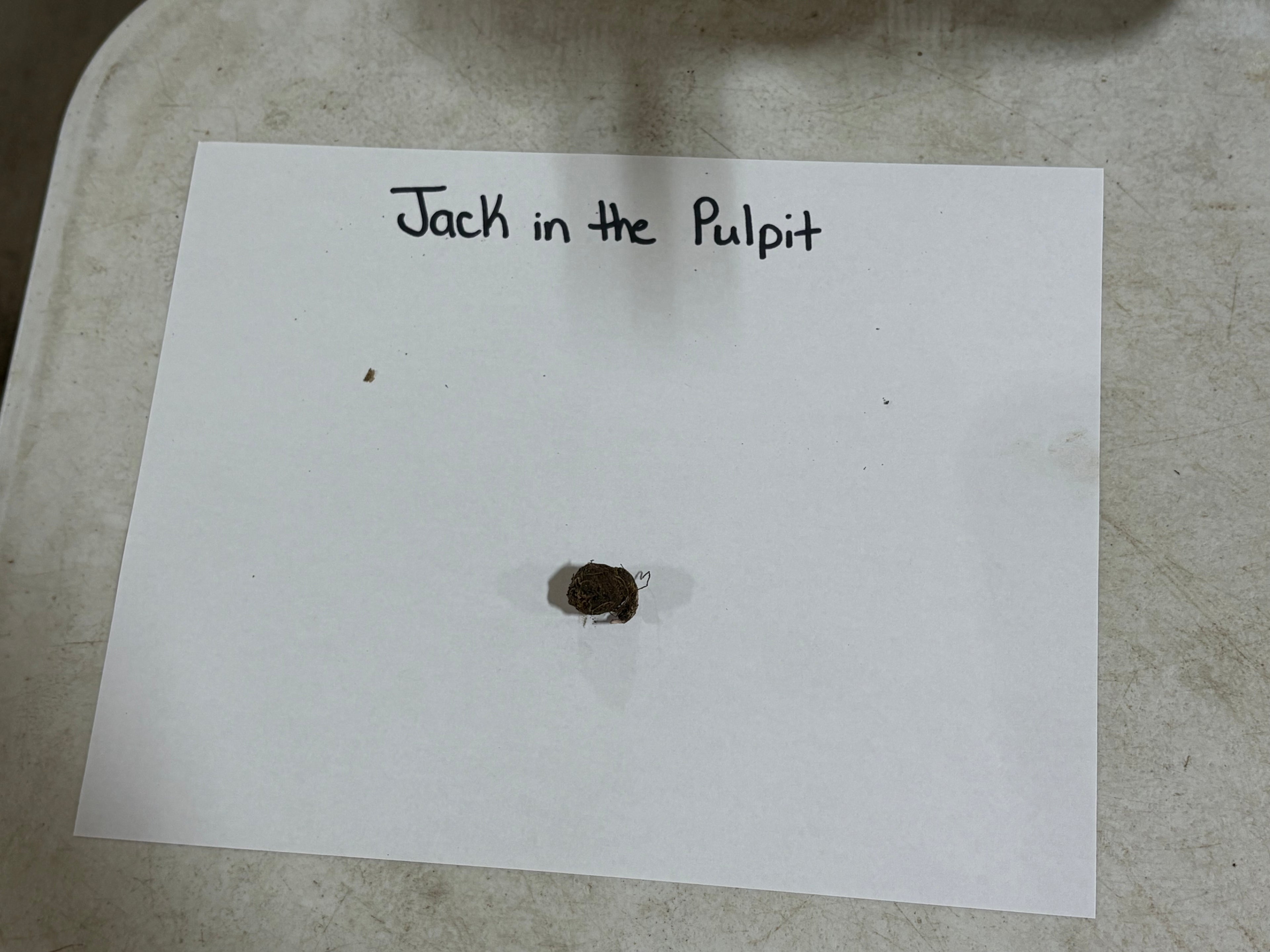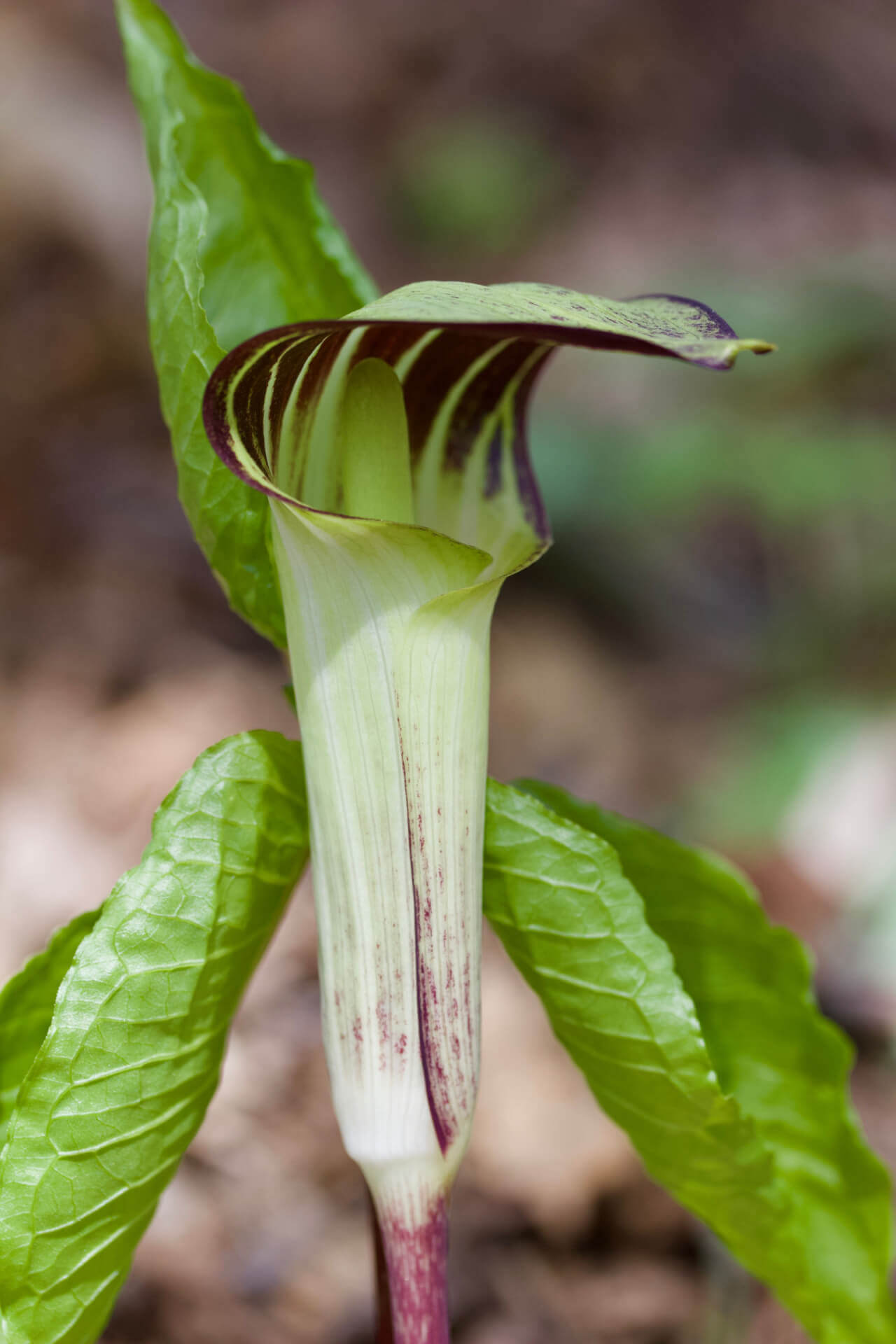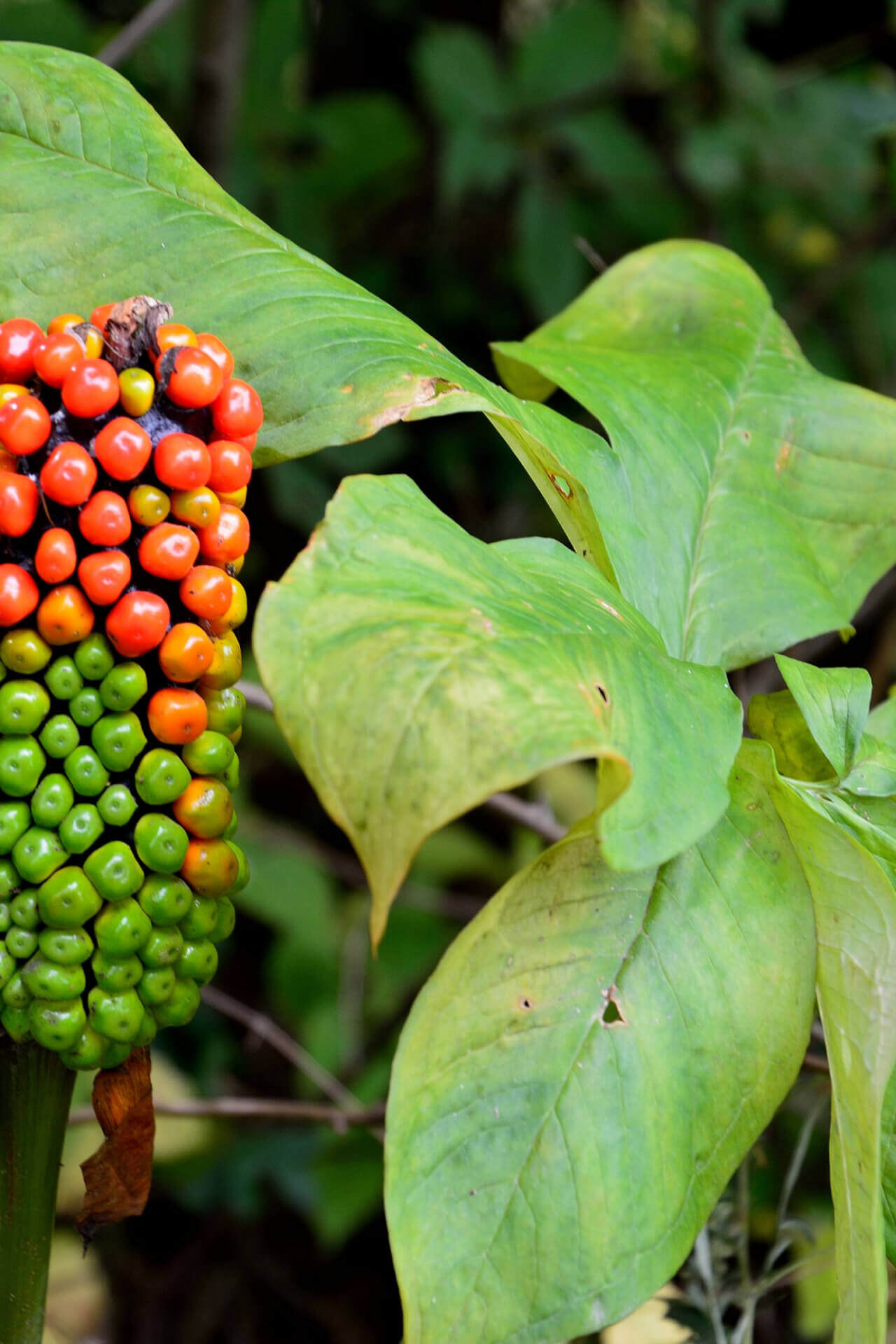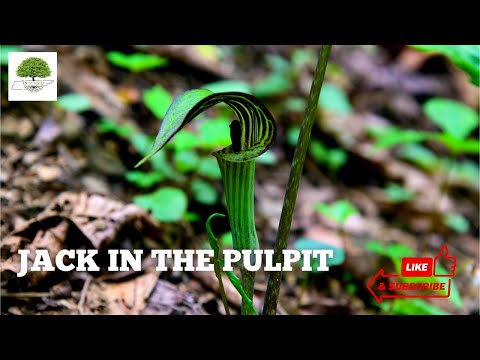Jack in the Pulpit For Sale
Jack in the Pulpit, Arisaema triphyllum, is an herbaceous perennial with exotic, vase-like flowers and unique leaves. It is one of many perfect plants for a shady spot in your garden. The flowers are green and have distinctive stripes of dark purple. Add a unique touch to any garden bed with this plant, and you will wonder if there are fairies living somewhere near it. The flowers bloom in the spring and give way to a stalk of red berries that will mesmerize you, your family.
Jack in the Pulpit Plant Details
Family: Araceae
Light Requirement: Full to Partial Shade
Water Needs: Moist
Height: 1 – 2 ft.
Spread: 12 – 18 in.
Growth Rate: Fast
Bloom Time: Spring
Flower Color: Green
Wildlife Value: Attracts bees
Landscape Uses and Maintenance
Perfect for your shade garden, woodland garden, or as a rare choice for the cottage garden. Pair with Mayapple, Wild Ginger, Bleeding Heart, and ferns to enjoy a serene woodland garden.
Jack In The Pulpit is a low-maintenance plant that needs little care. Water it only in drought. Jack in the pulpit is highly disease and pest-resistant and thrives almost anywhere you plant it. Once the seeds have matured and turned bright red, they can be harvested from the plant and sown in the soil to make more plants.
Noteworthy Characteristics
Jack in the Pulpit will attract plenty of pollinators to your garden. Other friendly flyers pollinate the flowers, and the berries will attract birds, including Wood Thrushes and wild pheasants.
Exposure
Jack in the Pulpit (Arisaema triphyllum) thrives in dappled or filtered sunlight. It prefers shady woodland conditions with indirect light, mimicking its natural forest habitat. Ensure it receives protection from direct sun to maintain its vibrant foliage and unique blooms.
Height at Maturity
Under 12"
Usage
Shade Plant
Shipped As
Bare-root
Ships
USPS
Planting Zones
4-9
